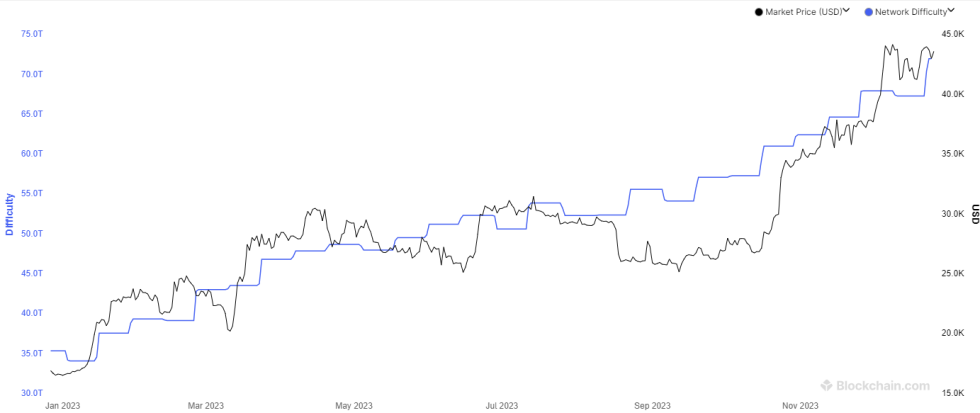Bitcoin Miners Smash Hash Record Despite 7% Difficulty Rise
Data shows the Bitcoin mining hashrate has seen a sharp jump to new all-time highs despite the network difficulty registering a 7% rise recently.
7-Day Bitcoin Mining Hashrate Has Set A New Record
The “mining hashrate” refers to the total amount of computing power currently connected to the Bitcoin blockchain. This metric is very relevant for the BTC network, as its value can have a direct influence on the chain’s security.
A larger hashrate means that there are more nodes for a malicious attacker to go through, as such an attack can only be successful if the attacker can bring under control at least 51% of the hashrate.
This benefit on the security from a higher value of the indicator only appears, though, if the new hashrate that’s being added by the miners is sufficiently decentralized.
Now, here is a chart that shows the trend in the 7-day average Bitcoin mining hashrate over the past year:
The value of the metric appears to have gone up sharply in recent days | Source: Blockchain.com
From the above graph, it’s visible that the 7-day Bitcoin mining hashrate has registered a rapid uptrend during the past couple of weeks and has smashed through the previous all-time high (ATH).
This sharp rise would suggest that the miners are finding the blockchain quite attractive to mine on right now, a potential result of the recent price surge and transaction fee mania that’s boosting their revenues.
Besides the implications for security, the hashrate also contains information about the competition present among the miners. A feature of the BTC network is that block rewards are only given out at a fixed value and rate, so if there are more miners on the chain, the share each one gets becomes smaller.
The “mining difficulty” is what ensures that this dynamic remains true. If the difficulty didn’t exist, a rise of hashrate would result in the miners going through blocks faster thanks to the additional computing power, and thus, generating the rewards faster as well.
But as the blockchain’s code contains this feature, the network ups its difficulty whenever the hashrate goes up, so that the miners are slowed back down to the standard rate, and block rewards continue being given out at the pace Satoshi intended.
The presence of the difficulty means that the Bitcoin blockchain doesn’t fall prey to inflation, as the block rewards, which the feature controls the pace of, are the only way to produce more of the asset.
While this is true, the feature can be troublesome from the perspective of the miners, as the competition between them has only been skyrocketing as the hashrate continues setting new records.
The latest difficulty adjustment on the blockchain raised the difficulty by almost 7%, but it would appear that so far the miners haven’t been discouraged by this increase, as they have only continued to add a further amount of hashrate.

The trend in the mining difficulty over the past year | Source: Blockchain.com
BTC Price
Bitcoin has seen a plunge recently as its price is now down to the $42,700 level.
Looks like BTC has fallen under the $43,000 mark | Source: BTCUSD on TradingView
Featured image from Brian Wangenheim on Unsplash.com, charts from TradingView.com, Blockchain.com
Credit: Source link


Comments are closed.